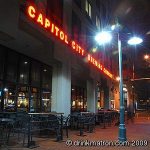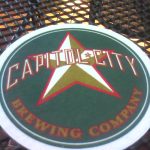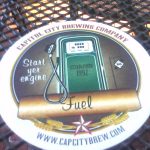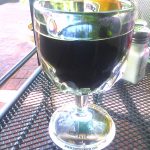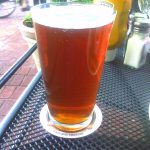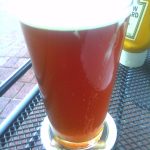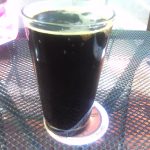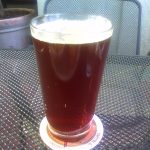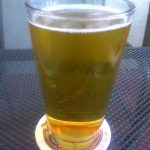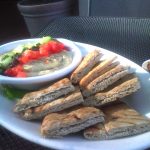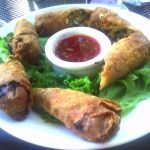Everybody has a favorite drink, and craft beer drinkers are no different. Some like a brewery in general, and others, just a specific brew. My beer drinking friends have some of the most eclectic tastes of anyone I know, and being that it’s American Craft Beer Week, I thought you’d like to know just exactly what it is we’re drinking.
Adrian’s & My Favorite
Bell’s Brewery, Inc, Kalamazoo, Mich.
While Adrian and I both like Bell’s, he likes the taste and range of their beers. If he was going to pick the one he likes the most, he says Two Hearted Ale comes to mind. The reason? “I like hoppy beers, and Two Hearted has a piney, fruity flavor that is just ideal.”
As for me, I enjoy one Bell’s beer in particular, Oberon Ale. I love Oberon not only because of its fantastic flavor, but because it’s the beer that got me started with craft brews. Since taking my first sip of Oberon about four years ago, I’ve given up the domestic brews that once dominated my early 20’s.
Andi’s Picks
Andi’s favorites are two fold because she enjoys them at different times of the year. In summer, Leinenkugel’s Summer Shandy fills her fridge, and in winter, she warms up with Sam Adams Cherry Wheat.
Leinenkugel’s Summer Shandy, Jacob Leinenkugel Brewing Co., Chippewa Falls, Wisc.
Andi says she enjoys Leinenkugel’s Summer Shandy because “it tastes like refreshment in a bottle. It feels like you could run a marathon and drink it to replenish yourself.”
Sam Adams Cherry Wheat, The Boston Beer Co, Boston, Mass.
Sam Adams Cherry Wheat shows up on Andi’s list because “it’s a warm beer, even though it’s served cold, and it’s flavorful enough that it warms your tummy, and thick enough to take the chill off.”
James’ Favorite
Left Hand Brewing Milk Stout, Left Hand Brewing Co., Longmont, Col.
James loves this dark brew “because it has an amazing flavor without being overpowering. Stouts are my favorite style of beer, but some can be a little potent. I enjoy a lot of flavor in my beer, but some seem like they try too hard. Milk Stout seems to have perfected the balance.”
Erica’s Pick
Goose Island Beer Co., Chicago, Ill.
Erica “knew it’d be something from Goose Island” because “it was my first taste of a beer outside of the Big 3. It’s what made me realize beer wasn’t ‘gross.’ My go to is 312, but my favorite is Sofie.”
Danger’s Favorite
Shine On, Central Waters Brewing Co., Amherst, Wisc.
Danger enjoys this red ale because it “is a darker beer that I can drink without feeling like I had a meal in a bottle.”
Rob & Ryder’s Pick
Widow Maker Black Ale, Keweenaw Brewing Co., Houghton, Mich.
Rob likes Widow Maker because “it reminds me a lot of Stroh’s Dark, which was always a favorite. It has a good flavor but isn’t real heavy or filling like some dark beers can be.”
Ryder isn’t much for craft beers, but if he’s going to drink one, it’s going to be Widow Maker.
Other Picks
My friend Keith loves beer from Horny Goat Brewing Co. in Madison, Wisc., and Sprecher Amber from Sprecher Brewing Co. in Milwaukee, Wisc.
Melissa thinks the Cream Ale from Sun King Brewing Co., in Indianapolis, Ind. is “super yummy.”
Donna likes Red Sky Ale, from Frankenmuth Brewery in Frankmuth, Mich., “because it goes so well with molten chocolate cake.”
Pyro says “If you’re going to twist my arm I’ll say Surly Furious (Surly Brewing Co, Brooklyn Center, Minn.). It’s a delicious hop heavy IPA.”
